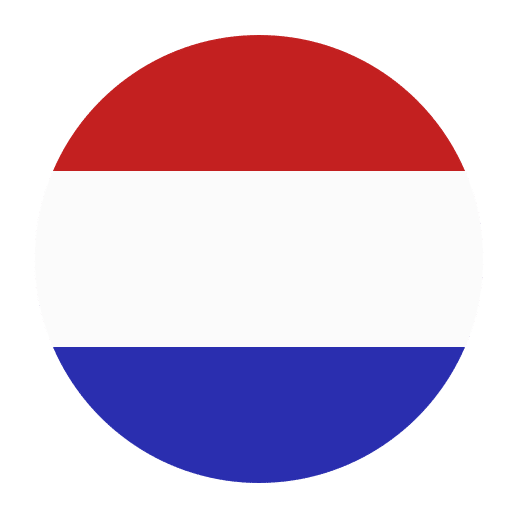Learning a new language can be a daunting task, but it can also be an incredibly rewarding experience. One effective method for acquiring a new language is through the use of short stories. This article will delve into the benefits of using Dutch short stories for language learning and provide practical tips on how to maximize this resource. Whether you’re a beginner or an advanced learner, incorporating short stories into your study routine can significantly enhance your understanding of Dutch.
Why Use Short Stories for Language Learning?
Engagement and Motivation
One of the primary advantages of using short stories is that they are inherently engaging. Unlike textbooks, which can sometimes be dry and monotonous, short stories are designed to capture the reader’s attention. This engagement can make the learning process more enjoyable and less of a chore. When you’re interested in the material, you’re more likely to stick with it and retain the information.
Cultural Context
Short stories often provide a glimpse into the culture of the language being learned. This cultural context can help you understand not just the language, but also the customs, traditions, and social norms of Dutch-speaking countries. For instance, a story set in the Netherlands might teach you about Dutch holidays, food, or daily routines, adding another layer to your language learning experience.
Vocabulary and Grammar in Context
Reading short stories allows you to see vocabulary and grammar in context, which can be more effective than studying lists of words or isolated grammar rules. When you encounter new words or grammatical structures in a story, you’re more likely to remember them because they’re tied to a narrative. This contextual learning helps reinforce the material and makes it easier to apply in real-life situations.
Improved Reading and Comprehension Skills
Regularly reading Dutch short stories can improve your reading and comprehension skills. As you become more familiar with the language, you’ll be able to read more quickly and understand more complex texts. This skill is crucial for advanced language learners who need to read academic papers, news articles, or other longer texts in Dutch.
Choosing the Right Short Stories
Level-Appropriate Material
It’s essential to choose short stories that match your current language proficiency level. If you’re a beginner, look for stories with simple vocabulary and basic sentence structures. Intermediate learners might opt for stories with more complex plots and a wider range of vocabulary. Advanced learners can tackle more challenging texts that include idiomatic expressions and sophisticated grammar.
Interest and Relevance
Select stories that interest you. Whether it’s mystery, romance, science fiction, or historical fiction, choosing a genre that you enjoy will make the learning process more enjoyable. Additionally, stories that are relevant to your life or experiences can be more engaging and easier to relate to.
Annotated Texts
Annotated short stories, which include explanations of difficult words and phrases, can be particularly helpful. These annotations can save you time looking up words and help you understand the text more quickly. Some annotated texts also include questions or exercises to test your comprehension, adding an extra layer of learning.
How to Use Short Stories for Language Learning
Active Reading
Active reading involves more than just passively skimming through a text. To get the most out of a short story, read actively by taking notes, highlighting new vocabulary, and making annotations in the margins. Ask yourself questions about the plot, characters, and setting to deepen your understanding.
Read Aloud
Reading aloud can improve your pronunciation and fluency. It also helps you become more comfortable with the rhythm and intonation of Dutch. If possible, record yourself reading the story and listen to the playback to identify areas for improvement.
Summarize and Retell
After reading a short story, try to summarize it in your own words. This exercise forces you to process the material and ensures that you understand the main points. Additionally, retelling the story to someone else, or even to yourself, can reinforce your comprehension and speaking skills.
Discuss with Others
If possible, join a study group or find a language partner to discuss the short stories you read. Discussing the material with others can provide new insights and help clarify any points of confusion. It also offers an opportunity to practice speaking and listening skills in a conversational setting.
Use Supplementary Materials
Incorporate other learning materials to complement your reading. For example, use a Dutch-English dictionary to look up unfamiliar words, or find grammar guides to understand complex sentences. Some learners might also benefit from using audio versions of the stories to improve listening skills.
Recommended Dutch Short Stories and Authors
For Beginners
Annie M.G. Schmidt: Known for her children’s books, Schmidt’s stories are simple yet engaging, making them perfect for beginners. Titles like “Jip en Janneke” are widely loved and offer a great introduction to Dutch literature.
Paul van Loon: Another excellent author for beginners, van Loon’s stories often involve fantasy and adventure, capturing the imagination of readers while using accessible language.
For Intermediate Learners
Simon Carmiggelt: Carmiggelt’s short, humorous columns offer intermediate learners a glimpse into everyday Dutch life. His writing is straightforward but rich in colloquial expressions.
Renate Dorrestein: Known for her psychological depth and intricate plots, Dorrestein’s works are suitable for those looking to challenge themselves while still enjoying an engaging read.
For Advanced Learners
Harry Mulisch: One of the Netherlands’ most celebrated authors, Mulisch’s stories often explore complex themes and require a higher level of language proficiency. Titles like “De Aanslag” are perfect for advanced learners looking to deepen their understanding of Dutch literature and history.
Gerard Reve: Known for his literary prowess and intricate storytelling, Reve’s works are ideal for those who are ready to tackle more challenging texts. His use of idiomatic language and complex sentence structures offers a rich learning experience.
Overcoming Challenges
Dealing with Difficult Vocabulary
Encountering unfamiliar words is inevitable when reading in a foreign language. Instead of getting discouraged, use this as an opportunity to expand your vocabulary. Make a list of new words and their meanings, and review them regularly. Contextual guessing can also be a useful skill; try to infer the meaning of a word based on the surrounding text before consulting a dictionary.
Understanding Idiomatic Expressions
Idiomatic expressions can be particularly challenging because their meanings often cannot be deduced from the individual words. When you come across an idiom, make a note of it and try to find examples of its usage in other contexts. Understanding idiomatic expressions is crucial for achieving fluency and sounding more like a native speaker.
Maintaining Consistency
Consistency is key to language learning. Make reading Dutch short stories a regular part of your study routine. Even if you only have a few minutes each day, consistent practice will yield better results than sporadic, intensive study sessions.
Conclusion
Using Dutch short stories for language learning offers a plethora of benefits, from improving vocabulary and grammar to providing cultural insights and enhancing reading comprehension. By choosing level-appropriate, engaging material and employing active reading strategies, you can make significant strides in your Dutch language proficiency. Whether you’re just starting out or looking to refine your skills, incorporating short stories into your study routine can make the learning process more enjoyable and effective. So, grab a Dutch short story and start reading – your journey to mastering the language awaits!

